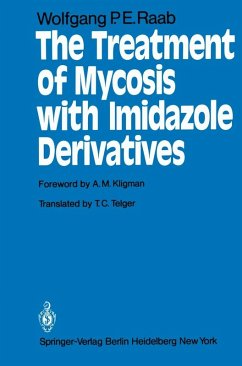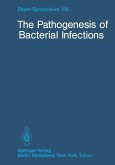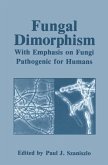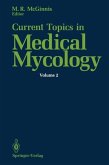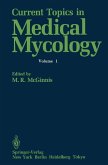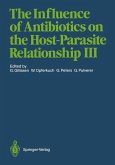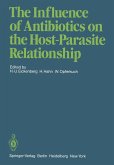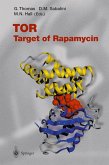40,95 €
40,95 €
inkl. MwSt.
Sofort per Download lieferbar

20 °P sammeln
40,95 €
Als Download kaufen

40,95 €
inkl. MwSt.
Sofort per Download lieferbar

20 °P sammeln
Jetzt verschenken
Alle Infos zum eBook verschenken
40,95 €
inkl. MwSt.
Sofort per Download lieferbar
Alle Infos zum eBook verschenken

20 °P sammeln
- Format: PDF
- Merkliste
- Auf die Merkliste
- Bewerten Bewerten
- Teilen
- Produkt teilen
- Produkterinnerung
- Produkterinnerung

Bitte loggen Sie sich zunächst in Ihr Kundenkonto ein oder registrieren Sie sich bei
bücher.de, um das eBook-Abo tolino select nutzen zu können.
Hier können Sie sich einloggen
Hier können Sie sich einloggen
Sie sind bereits eingeloggt. Klicken Sie auf 2. tolino select Abo, um fortzufahren.

Bitte loggen Sie sich zunächst in Ihr Kundenkonto ein oder registrieren Sie sich bei bücher.de, um das eBook-Abo tolino select nutzen zu können.
- Geräte: PC
- ohne Kopierschutz
- eBook Hilfe
- Größe: 18.09MB
Andere Kunden interessierten sich auch für
![The Pathogenesis of Bacterial Infections (eBook, PDF) The Pathogenesis of Bacterial Infections (eBook, PDF)]() The Pathogenesis of Bacterial Infections (eBook, PDF)73,95 €
The Pathogenesis of Bacterial Infections (eBook, PDF)73,95 €![Fungal Dimorphism (eBook, PDF) Fungal Dimorphism (eBook, PDF)]() Fungal Dimorphism (eBook, PDF)73,95 €
Fungal Dimorphism (eBook, PDF)73,95 €![Current Topics in Medical Mycology (eBook, PDF) Current Topics in Medical Mycology (eBook, PDF)]() Michael R. McGinnisCurrent Topics in Medical Mycology (eBook, PDF)73,95 €
Michael R. McGinnisCurrent Topics in Medical Mycology (eBook, PDF)73,95 €![Current Topics in Medical Mycology (eBook, PDF) Current Topics in Medical Mycology (eBook, PDF)]() Michael R. McGinnisCurrent Topics in Medical Mycology (eBook, PDF)73,95 €
Michael R. McGinnisCurrent Topics in Medical Mycology (eBook, PDF)73,95 €![The Influence of Antibiotics on the Host-Parasite Relationship III (eBook, PDF) The Influence of Antibiotics on the Host-Parasite Relationship III (eBook, PDF)]() The Influence of Antibiotics on the Host-Parasite Relationship III (eBook, PDF)113,95 €
The Influence of Antibiotics on the Host-Parasite Relationship III (eBook, PDF)113,95 €![The Influence of Antibiotics on the Host-Parasite Relationship (eBook, PDF) The Influence of Antibiotics on the Host-Parasite Relationship (eBook, PDF)]() The Influence of Antibiotics on the Host-Parasite Relationship (eBook, PDF)73,95 €
The Influence of Antibiotics on the Host-Parasite Relationship (eBook, PDF)73,95 €![TOR (eBook, PDF) TOR (eBook, PDF)]() TOR (eBook, PDF)161,95 €
TOR (eBook, PDF)161,95 €-
-
-
Produktdetails
- Verlag: Springer Berlin Heidelberg
- Seitenzahl: 160
- Erscheinungstermin: 6. Dezember 2012
- Englisch
- ISBN-13: 9783642675089
- Artikelnr.: 53389882
Dieser Download kann aus rechtlichen Gründen nur mit Rechnungsadresse in A, B, BG, CY, CZ, D, DK, EW, E, FIN, F, GR, HR, H, IRL, I, LT, L, LR, M, NL, PL, P, R, S, SLO, SK ausgeliefert werden.
- Herstellerkennzeichnung Die Herstellerinformationen sind derzeit nicht verfügbar.
1 Introduction.- 1.1 Antimicrobial Therapy.- 1.2 Microbial Diseases of the Skin and Mucous Membranes.- 1.3 Antimicrobial Drugs for Local Application.- 2 Broad-Spectrum Antimicrobials for Local Application.- 2.1 Preliminary Remarks.- 2.2 Disinf ectants and Antiseptics.- 2.3 Antibiotics.- 2.4 Chemotherapeutic Agents.- 2.5 Imidazole Derivatives with Antimicrobial Action.- 3 Econazole.- 3.1 General.- 3.2 Chemical Structure.- 3.3 Physical Properties.- 3.4 Antimicrobial Spectrum.- 4 General Microbiology of Imidazole Derivatives for Local Application.- 4.1 Preliminary Remarks.- 4.2 Modeof Action.- 4.3 Resistance and Tolerance.- 4.4 Interactions with Other Compounds.- 4.5 Bioavailability Studies.- 5 Therapeutic Use of Imidazole Derivatives in Animals (Experimental Therapy).- 5.1 Local Application.- 5.2 Systemic Application.- 6 General Pharmacology of the Imidazole Derivatives in Man and Animals.- 6.1 Pharmacologic Properties (Apart from Antimicrobial Action) ...- 6.2 Absorption, Excretion, and Metabolism in Animals.- 6.3 Absorption, Excretion, and Metabolism in Man.- 6.4 Sensitization.- 6.5 Anaphylactoid Activity.- 7 Toxicology of the Imidazole Derivatives.- 7.1 Preliminary Remarks.- 7.2 SystemicToxicity.- 7.3 LocalToxicity.- 8 Clinical Pharmacology of Topical Antimicrobials with Special Regard to the Imidazole Derivatives.- 8.1 Preliminary Remarks.- 8.2 Physical Properties.- 8.3 SkinTolerance.- 8.4 Sensitization.- 8.5 Photosensitizing Reactions.- 8.6 Interactions with Substances on the Skin Surface.- 8.7 Penetration and Absorption.- 8.8 Systemic Administration.- 8.9 Use in Veterinary Mediane and the Food Industry.- 8.10 Special Clinical Pharmacologic Considerations in the Local Application of Antimicrobials.- 8.11 Clinical Pharmacology of the Preparation.- 9 Microbial Infections in Man.- 9.1 General.- 9.2 Increase in Microbial Infections of Body Surfaces.- 9.3 Saprophytes and Parasites on Body Surf aces.- 9.4 Mixed and Double Inf ections of Body Surf aces.- 10 Mycoses.- 10.1 Etiology of Mycoses.- 10.2 The Increase in Mycoses.- 10.3 Classification of Mycoses.- 10.4 Mycoses of the Skin and Mucous Membranes.- 10.5 Mycoses of the Female Genitalia.- 10.6 Systemic Mycoses.- 10.7 General Principles in the Treatment of Mycoses.- 11 Systemic Administration of Antimycotically Active Imidazole Derivatives in Man.- 12 Local Application of Antimycotically Active Imidazole Derivatives in Man.- 12.1 Application to the Outer Skin.- 12.2 Application to the Mucous Membranes.- 13 Combined Use of Imidazole Derivatives and Glucocortoids for the Local Treatment of Skin Diseases.- 13.1 Preliminary Remarks.- 13.2 Combination of Antibiotics with Glucocortoids.- 13.3 Salicylic Acid, Haloprogin, Clioquinol, Chlorquinaldol, and Triclosan.- 13.4 Imidazole Derivatives and Glucocortoids.- 13.5 Indications for the Combined Use of Imidazole Derivatives and Glucocorticoids.- 14 Assessment of Mycoses in Various Branches of Mediane.- 14.1 Dermatology.- 14.2 Gynecology.- 14.3 Pediatrics.- 14.4 Stomatology.- 14.5 Otolaryngology.- 14.6 Otorhinolaryngology.- 14.7 Proctology.- 14.8 Urology.- 14.9 Internal Mediane.- 14.10 Orthopedics.- 14.11 Surgery, Intensive Care, Anesthesiology.- 15 Concluding Remarks.- 16 References.- 17 Subject Index.
1 Introduction.- 1.1 Antimicrobial Therapy.- 1.2 Microbial Diseases of the Skin and Mucous Membranes.- 1.3 Antimicrobial Drugs for Local Application.- 2 Broad-Spectrum Antimicrobials for Local Application.- 2.1 Preliminary Remarks.- 2.2 Disinf ectants and Antiseptics.- 2.3 Antibiotics.- 2.4 Chemotherapeutic Agents.- 2.5 Imidazole Derivatives with Antimicrobial Action.- 3 Econazole.- 3.1 General.- 3.2 Chemical Structure.- 3.3 Physical Properties.- 3.4 Antimicrobial Spectrum.- 4 General Microbiology of Imidazole Derivatives for Local Application.- 4.1 Preliminary Remarks.- 4.2 Modeof Action.- 4.3 Resistance and Tolerance.- 4.4 Interactions with Other Compounds.- 4.5 Bioavailability Studies.- 5 Therapeutic Use of Imidazole Derivatives in Animals (Experimental Therapy).- 5.1 Local Application.- 5.2 Systemic Application.- 6 General Pharmacology of the Imidazole Derivatives in Man and Animals.- 6.1 Pharmacologic Properties (Apart from Antimicrobial Action) ...- 6.2 Absorption, Excretion, and Metabolism in Animals.- 6.3 Absorption, Excretion, and Metabolism in Man.- 6.4 Sensitization.- 6.5 Anaphylactoid Activity.- 7 Toxicology of the Imidazole Derivatives.- 7.1 Preliminary Remarks.- 7.2 SystemicToxicity.- 7.3 LocalToxicity.- 8 Clinical Pharmacology of Topical Antimicrobials with Special Regard to the Imidazole Derivatives.- 8.1 Preliminary Remarks.- 8.2 Physical Properties.- 8.3 SkinTolerance.- 8.4 Sensitization.- 8.5 Photosensitizing Reactions.- 8.6 Interactions with Substances on the Skin Surface.- 8.7 Penetration and Absorption.- 8.8 Systemic Administration.- 8.9 Use in Veterinary Mediane and the Food Industry.- 8.10 Special Clinical Pharmacologic Considerations in the Local Application of Antimicrobials.- 8.11 Clinical Pharmacology of the Preparation.- 9 Microbial Infections in Man.- 9.1 General.- 9.2 Increase in Microbial Infections of Body Surfaces.- 9.3 Saprophytes and Parasites on Body Surf aces.- 9.4 Mixed and Double Inf ections of Body Surf aces.- 10 Mycoses.- 10.1 Etiology of Mycoses.- 10.2 The Increase in Mycoses.- 10.3 Classification of Mycoses.- 10.4 Mycoses of the Skin and Mucous Membranes.- 10.5 Mycoses of the Female Genitalia.- 10.6 Systemic Mycoses.- 10.7 General Principles in the Treatment of Mycoses.- 11 Systemic Administration of Antimycotically Active Imidazole Derivatives in Man.- 12 Local Application of Antimycotically Active Imidazole Derivatives in Man.- 12.1 Application to the Outer Skin.- 12.2 Application to the Mucous Membranes.- 13 Combined Use of Imidazole Derivatives and Glucocortoids for the Local Treatment of Skin Diseases.- 13.1 Preliminary Remarks.- 13.2 Combination of Antibiotics with Glucocortoids.- 13.3 Salicylic Acid, Haloprogin, Clioquinol, Chlorquinaldol, and Triclosan.- 13.4 Imidazole Derivatives and Glucocortoids.- 13.5 Indications for the Combined Use of Imidazole Derivatives and Glucocorticoids.- 14 Assessment of Mycoses in Various Branches of Mediane.- 14.1 Dermatology.- 14.2 Gynecology.- 14.3 Pediatrics.- 14.4 Stomatology.- 14.5 Otolaryngology.- 14.6 Otorhinolaryngology.- 14.7 Proctology.- 14.8 Urology.- 14.9 Internal Mediane.- 14.10 Orthopedics.- 14.11 Surgery, Intensive Care, Anesthesiology.- 15 Concluding Remarks.- 16 References.- 17 Subject Index.
